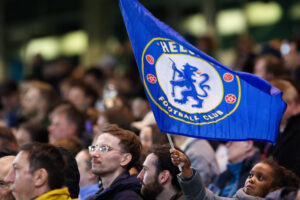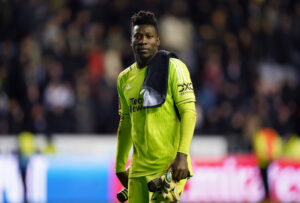This season’s Premier League championship may prove to be the most competitive English title race ever – and it is not just hyperbole to say that. The fact that after nine games the top three teams (Manchester City, Arsenal and Liverpool) are level on points and separated only by the tiniest goal difference (City are top by virtue of having scored just one more goal than Arsenal) is ample proof of the new, ultra-competitive nature of the English top flight.
2016-17 PREMIER LEAGUE PROMISES TO BE TIGHTEST TITLE RACE EVER
In addition, the next two teams (Chelsea and Tottenham) are only one point behind the top three, meaning that the top five teams are separated by just a single point. This is not only unprecedented in the Premier League era but arguably in the entire history of English football.
So far, this is certainly the most competitive title race since the Premier League was established nearly 25 years ago. In almost every other Premier League season before this one, even at this early stage in the season, there has been a much greater points gap between the team that is top and the team that is fifth. Invariably, the title race has gone on to be contested between a maximum of three teams and usually just two.
This season, in addition to the five aforementioned clubs, there is also Manchester United to consider, who, despite their early season struggles under Jose Mourinho, are still only six points off the top. It is also possible to make a case for newly rich Everton to compete, if not for the title then certainly for a Champions League place. They are already a point ahead of Manchester United and despite their defeat to Burnley last weekend (Turf Moor is clearly a graveyard for Merseyside teams, as Liverpool also lost there earlier this season), they look well placed under Ronald Koeman to translate the undoubted qualities of their squad into Premier League points.
And it doesn’t stop there, as eighth-placed Southampton are perhaps the exemplar of the Premier League’s ultra-competitiveness. They deservedly drew away at Manchester City last weekend and might well have won the game late on. With Charlie Austin and Nathan Redmond seamlessly replacing the likes of Graziano Pelle and Victor Wanyama, they look set to challenge for the European places – and perhaps not just the Europa League but the prized Champions League places themselves.
Last weekend’s round of matches showed that this strong vein of competitiveness, in which so-called smaller teams genuinely believe they can beat the bigger, more well-resourced clubs, extends right down the Premier League table. Of the top seven, only Liverpool and Chelsea managed to win. Many commentators noted that, unlike the other top clubs (with the exception of Everton), they had had a whole week to prepare for their games as they are not in European competition this season.
Only Sunderland, who are yet to win this season, and Hull City, who after a strong start are now beginning to fade, look as if they will be cut adrift. Every other team in the Premier League can genuinely claim to be able to compete at the highest level, with at least one player who merits inclusion in a Champions League squad. For example, Swansea City, who complete the bottom three alongside Hull and Sunderland, have the superb Gylfi Sigurdsson, one of Iceland’s stars at Euro 2016.
It is as if the Premier League is beginning to achieve the supreme levels of competitiveness that have traditionally characterised American sport rather than European football. The major American sporting leagues – the NFL, NBA, MLB and NHL – have always been run on the basis that they are only as strong as their weakest team.
Consequently, financial and sporting parity has been “built in”, notably through the draft system, whereby the team finishing bottom of the pile gets first pick of the best players coming out of college.
In England, that level of competitiveness has been achieved more through chance than planning. Smaller clubs are making the most of their TV riches to break their own transfer records and buy players that they would never have dreamed of owning in previous years.
A similar situation prevailed in Italy’s Serie A in its own golden years of the 1980s and 1990s, when even small-town teams such as Udinese could secure the signing of a global star like Zico. Now, for Zico at Udinese, read Shaquiri at Stoke, or even Dmitri Payet at West Ham. Every club, with the exception of Hull and Sunderland, has its standout player.
HISTORIC SIGNIFICANCE
This level of parity, of competitiveness, is unprecedented in the Premier League era. In fact, one has to go much further back than that to find a time when the English top flight was as competitive as it is now – nearly fifty years to the late 1960s and early 1970s.
For nearly a decade between 1967 and 1973, there were seven different English title-winners in seven seasons, with no team winning the First Division (as it was then) more than once. The roll-call of champions in that period is extraordinary: Manchester United, Manchester City, Leeds United, Everton, Arsenal, Derby County and Liverpool.
Of course, the last name on that list is the most significant one, as Liverpool won a third title (to go alongside two in the 1960s) under Bill Shankly. Two years later, Shankly would give way to Bob Paisley, who would then lead Liverpool into their golden age from 1976 to 1990, when they won ten titles out of a possible 15.
If anything, that period of dominance was exceeded only by that of their great rivals, Manchester United, in the next two decades. Alex Ferguson’s men won 13 out of the 21 titles between 1993 and 2013.
It now seems as if those two extraordinary periods of dominance by Liverpool and Manchester United, one almost immediately after the other, are being replaced by the proverbial level playing field. Since Manchester United last won the title in 2013, there have been three different winners – Manchester City, Chelsea and, most incredibly of all, Leicester City – and there is every chance of there being another different winner this season.
So it seems that English football has gone back to the future, with the ultra-competitiveness of the last few years unmatched for nearly half a century. Unfortunately, that may not be the only way in which English football has returned to the 1970s. The appalling clashes between hundreds of West Ham and Chelsea fans at this week’s League Cup tie provided a terrifying reminder of the dreadful hooliganism that blighted the English game in the 1970s and 1980s. Despite being found all over Europe at the time, the acts were known as “the English disease”.
Frankly, it is absolutely extraordinary that the problems at West Ham’s new London Stadium, which formerly was the 2012 Olympic Stadium, have been allowed to persist for this long. Almost every home West Ham game so far has been marred by violence, some of it fought out between West Ham fans themselves.
If that trend is allowed to continue unchecked, there is a very real danger of hooliganism returning to other grounds and then the newly enriched and newly competitive English top flight will be in grave danger of losing not only its lustre but its precious sponsorship. Global brands and TV companies will not be eager to sponsor and broadcast mass fighting rather than football matches.
The message is clear: in an ideal world, we want to keep the competitiveness on the field and lose the fighting off it. If that can be achieved, then the Premier League will genuinely be able to claim that it is the most competitive football league in the world, and arguably the most competitive sporting league of any kind.
Main Photo






